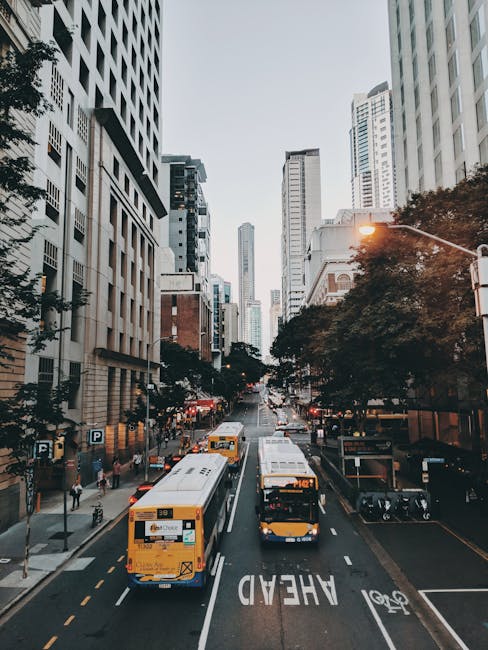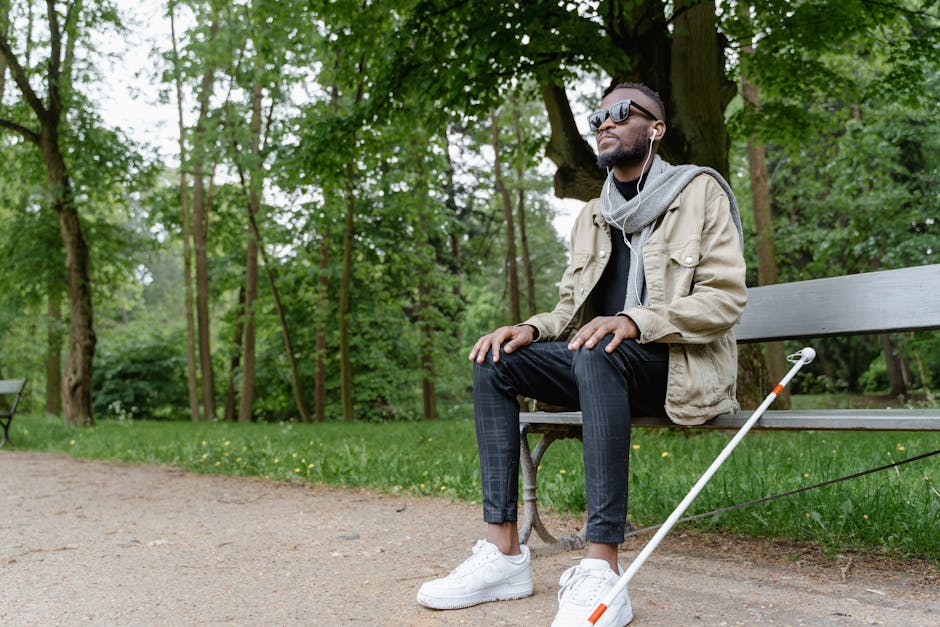Brisbane Public Transport: Your Ultimate Guide to Getting Around

Brisbane Public Transport: Your Ultimate Guide to Getting Around
Hey there, fellow explorer! Brisbane, the sunny capital of Queensland, is a fantastic city brimming with culture, delicious food, and stunning scenery. But navigating a new city's public transport can feel a bit daunting, right? Well, fear not! As someone who's spent years zipping around Brisbane on its ferries, trains, and buses, I'm here to share my insider tips and help you become a public transport pro. Think of me as your personal Brisbane transport guru!
Opal Card: Your Ticket to Ride
Before we dive into the specifics of each mode of transport, let's talk about the key to unlocking Brisbane's public transport system: the go card. Think of it as your rechargeable ticket. It's much cheaper than buying paper tickets, so it's a must-have, especially if you plan on using public transport even just a few times. You can purchase a go card at most train stations, bus stations, convenience stores (like newsagents), and online. It comes in adult, child, concession, and senior versions. Remember to tap on at the start of your journey and tap off at the end to ensure you're charged the correct fare.
Here's a breakdown of why the go card is your best friend:
- Cheaper Fares: As I mentioned, go card fares are significantly lower than paper tickets.
- Convenience: No fumbling for change or lining up at ticket machines.
- Automatic Discounts: The system automatically calculates the lowest possible fare based on your travel.
- Easy Top-Up: You can top up your go card online, at stations, or at participating retailers. Consider setting up auto top-up to never be caught short.
Don't forget to register your go card online! This protects your balance if you lose your card and allows you to check your travel history.
Navigating Brisbane's CityCat Ferries
Ah, the CityCats! These iconic catamarans are not just a mode of transport; they're a scenic experience in themselves. Gliding along the Brisbane River, taking in the city skyline, is a wonderful way to start or end your day. The CityCats connect various points along the river, from the University of Queensland (UQ) in the west to Northshore Hamilton in the east. It's also the best way to travel down to South Bank, and experience the Cultural Precinct!
My Top Tips for CityCat Travel:
- Check the Timetable: CityCat services generally run frequently, but check the timetable, especially for off-peak hours and weekends, via the TransLink website or app.
- Find a Seat with a View: Arrive a little early, especially during peak hours, to snag a seat by the window. The views are worth it!
- Consider a River Loop: Even if you don't have a specific destination in mind, take a round trip. It's a relaxing way to see the city from a different perspective.
- Ideal for Tourists: The CityCat provides tourists an excellent way to see the city. Jumping on and off at the various spots is a great way to spend the day.
- Accessibility: CityCats are wheelchair accessible.
Popular CityCat Stops:
- South Bank: For the parklands, Queensland Art Gallery, Queensland Museum, and numerous restaurants.
- Riverside: Close to the city center, Eagle Street Pier, and many office buildings.
- UQ St Lucia: For the University of Queensland campus.
- New Farm Park: For the beautiful park and Powerhouse arts venue.
- Northshore Hamilton: Close to Eat Street Markets (a must-visit on weekends!)
CityHopper: Brisbane's Free Ferry Service
Did you know Brisbane also has a free ferry service? The CityHopper is a smaller ferry that operates between Sydney Street ferry terminal in New Farm and North Quay ferry terminal in the city. It stops at several key locations along the way, and it's completely free! It's a fantastic option for getting around the city center and enjoying the river views without spending a cent. Just hop on and hop off as you please!
Riding the Brisbane Train Network

Brisbane's train network is extensive and efficient, connecting the city center to the suburbs and beyond. It's a reliable way to travel longer distances and avoid traffic congestion. The network is divided into several lines, each identified by a different color. Getting familiar with these lines is key to navigating the system effectively.
Understanding the Train Lines:
Here's a quick overview of the main train lines:
- Airport Line: Connects the city center to Brisbane Airport (Domestic and International terminals).
- Beenleigh Line: Runs south to Beenleigh.
- Caboolture Line: Runs north to Caboolture.
- Cleveland Line: Runs east to Cleveland.
- Doomben Line: A short line serving the Doomben racecourse area.
- Ferny Grove Line: Runs northwest to Ferny Grove.
- Ipswich/Rosewood Line: Runs west to Ipswich and Rosewood.
- Redcliffe Peninsula Line: Runs north to Kippa-Ring on the Redcliffe Peninsula.
- Shorncliffe Line: Runs north to Shorncliffe.
- Springfield Line: Runs west to Springfield.
My Train Travel Tips:
- Plan Your Journey: Use the TransLink website or app to plan your journey. It will tell you which line to take, platform numbers, and estimated travel time.
- Check for Trackwork: Weekend trackwork is common. Check the TransLink website or app for service disruptions before you travel, especially on weekends.
- Off-Peak Travel: If possible, travel during off-peak hours to avoid crowded trains.
- Platform Information: Pay attention to the platform displays to ensure you're boarding the correct train.
- Accessibility: All train stations are wheelchair accessible.
Key Train Stations:
- Central Station: The main train station in the city center.
- Roma Street Station: Another major station, connecting to long-distance trains and buses.
- South Brisbane Station: Close to South Bank, the Queensland Art Gallery, and the Queensland Museum.
- Fortitude Valley Station: For the vibrant Fortitude Valley entertainment precinct.
- Brisbane Airport Stations: For domestic and international flights.
Mastering Brisbane's Bus Network

Brisbane's bus network is extensive, covering almost every corner of the city and its surrounding suburbs. It's a vital part of the public transport system, connecting areas not directly served by trains or ferries. Understanding the bus routes and how they integrate with other modes of transport is crucial for getting around Brisbane efficiently.
Navigating the Bus System:
Brisbane's bus routes are numbered, and the numbers often indicate the general direction or area they serve. For example, buses in the 100s generally travel towards the northern suburbs, while those in the 200s head towards the southern suburbs.
Types of Buses:
You'll encounter different types of buses in Brisbane:
- Regular Buses: These are the standard buses that run on most routes.
- BUZ (Brisbane Urban Zone) Routes: These are high-frequency routes that operate within the inner city and surrounding suburbs. They run frequently, often every 10-15 minutes.
- Great Circle Line: These routes circle the city.
- Rocket Buses: These are express buses that have limited stops and are faster than regular buses.
My Bus Travel Tips:
- Use the TransLink App: The TransLink app is your best friend for planning bus journeys. It provides real-time information on bus locations, estimated arrival times, and route changes.
- Know Your Stop: Familiarize yourself with the bus stop names or numbers along your route.
- Signal the Driver: When you see your bus approaching, signal to the driver that you want to board.
- Tap On and Tap Off: Remember to tap your go card on the reader when you board the bus and tap off when you exit.
- Plan for Peak Hour: Buses can get crowded during peak hours, so allow extra travel time.
- NightLink Services: On Friday and Saturday nights, NightLink bus services operate on selected routes, providing transport after midnight.
- Accessibility: Most buses are wheelchair accessible.
Key Bus Stations:
- Queen Street Bus Station: Located in the city center, this is a major hub for bus services.
- Cultural Centre Bus Station: Located in South Bank, near the Queensland Art Gallery and the Queensland Museum.
- Roma Street Bus Station: Connects to long-distance bus services.
Integrating Ferries, Trains, and Buses: A Seamless Experience

The beauty of Brisbane's public transport system lies in its seamless integration. You can easily transfer between ferries, trains, and buses to reach your destination. The TransLink website and app are invaluable tools for planning multi-modal journeys. Here's how to make the most of it:
- Plan Ahead: Use the TransLink journey planner to input your starting point and destination. The planner will provide you with the best route options, including transfer points and estimated travel times.
- Look for Interchange Stations: Interchange stations are designed to facilitate easy transfers between different modes of transport. Look for stations like Roma Street, South Brisbane, and Fortitude Valley, which offer connections between trains and buses.
- Check Real-Time Information: Use the TransLink app to check for real-time updates on service delays or disruptions. This will help you adjust your travel plans if necessary.
- Allow Ample Transfer Time: When planning your journey, allow sufficient time for transfers, especially during peak hours. It's better to arrive early than to miss your connecting service.
- Utilize Park 'n' Ride Facilities: Park 'n' Ride facilities are available at many train stations, allowing you to drive to the station, park your car, and then take the train to your destination. This is a convenient option for commuters who live further away from the city center.
The TransLink App: Your Ultimate Travel Companion

I've mentioned the TransLink app a few times, and that's because it's genuinely a game-changer. It's available for free on both iOS and Android devices, and it provides a wealth of information to help you navigate Brisbane's public transport system. Here's what you can do with the app:
- Journey Planning: Plan your journey from A to B, including transfer points and estimated travel times.
- Real-Time Information: Check for real-time updates on service delays or disruptions.
- Go Card Balance: Check your go card balance and top up your card online.
- Timetables: Access timetables for all bus, train, and ferry services.
- Stop Information: Find nearby bus stops, train stations, and ferry terminals.
- Favorites: Save your favorite routes and stops for quick access.
Seriously, download the TransLink app. It's like having a personal transport concierge in your pocket!
Beyond the Basics: Tips for a Smooth Journey

Here are a few extra tips to help you navigate Brisbane's public transport system like a seasoned local:
- Plan Ahead for Events: When major events are happening in Brisbane (such as concerts, sporting events, or festivals), public transport can be very busy. Plan your journey in advance and allow extra travel time. TransLink often provides extra services for major events.
- Consider Active Transport: Brisbane is a very walkable and bike-friendly city. Consider walking or cycling for shorter distances, especially in the city center. You can even combine cycling with public transport by taking your bike on the train or ferry (subject to certain restrictions).
- Be Aware of Zone Fares: Brisbane's public transport fares are based on zones. The further you travel, the higher the fare. The TransLink journey planner will calculate the fare for your journey.
- Keep an Eye on Your Belongings: As with any public transport system, it's important to be aware of your surroundings and keep an eye on your belongings.
- Be Respectful of Others: Be considerate of other passengers. Offer your seat to elderly or pregnant passengers, and avoid loud conversations or playing music without headphones.
Embrace the Journey!

So there you have it – your ultimate guide to getting around Brisbane using ferries, trains, and buses. With a little planning and the help of the TransLink app, you'll be navigating the city like a pro in no time. Don't be afraid to explore, try new routes, and discover hidden gems along the way. Public transport isn't just a way to get from A to B; it's an opportunity to experience the city and connect with its people.
Brisbane is a beautiful city, and I hope this guide helps you make the most of your time here. Happy travels!
Post a Comment